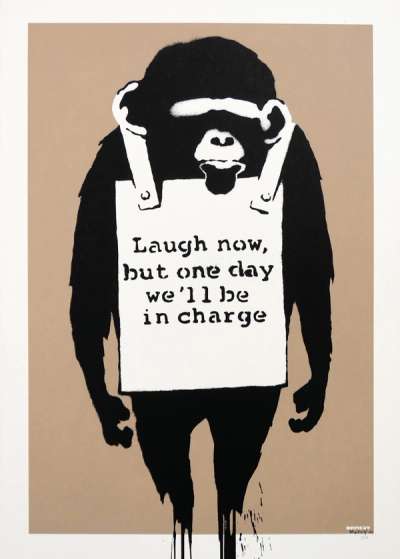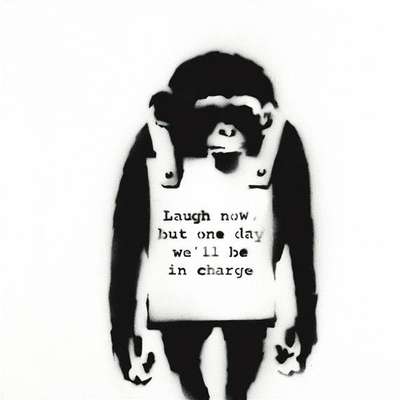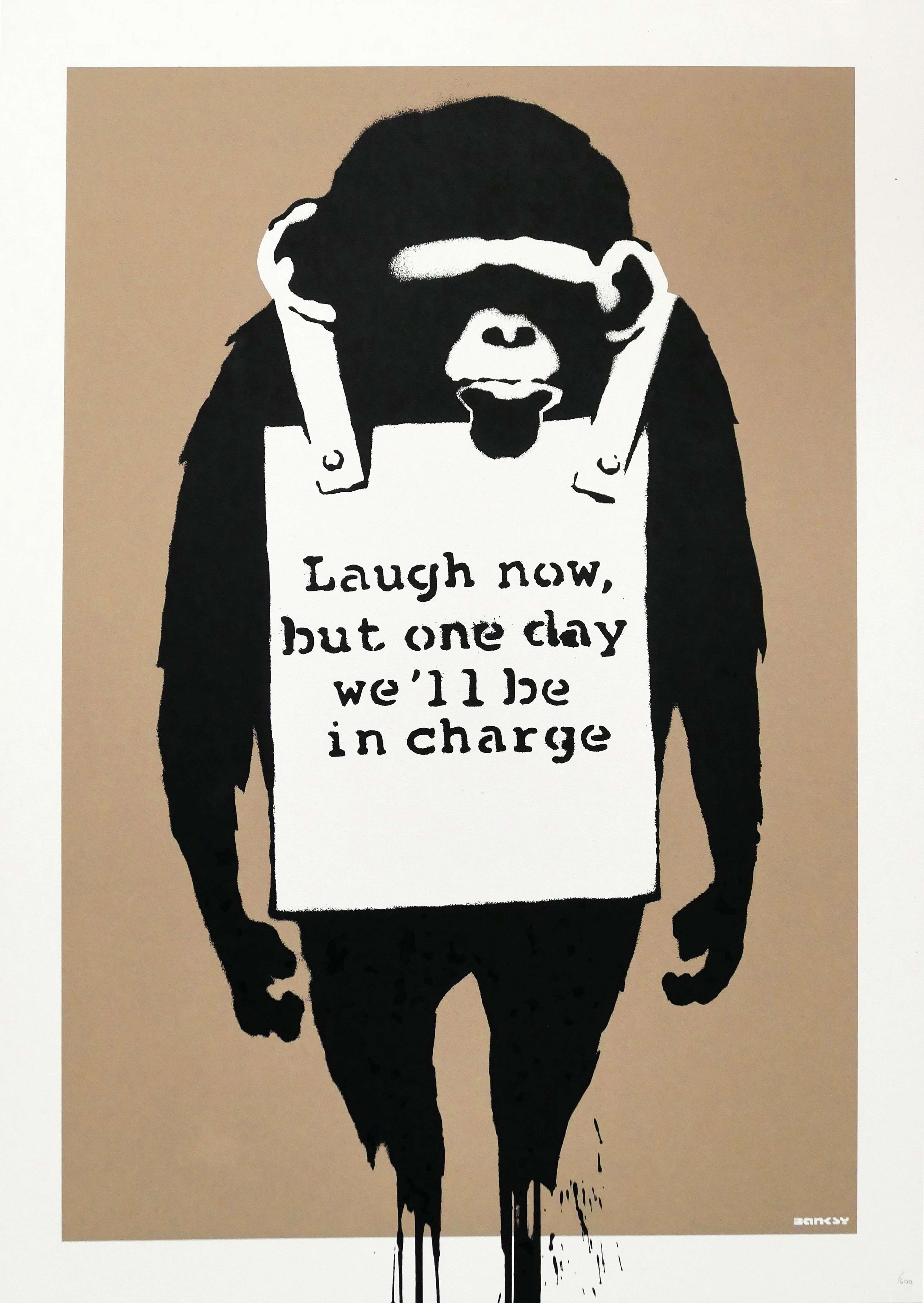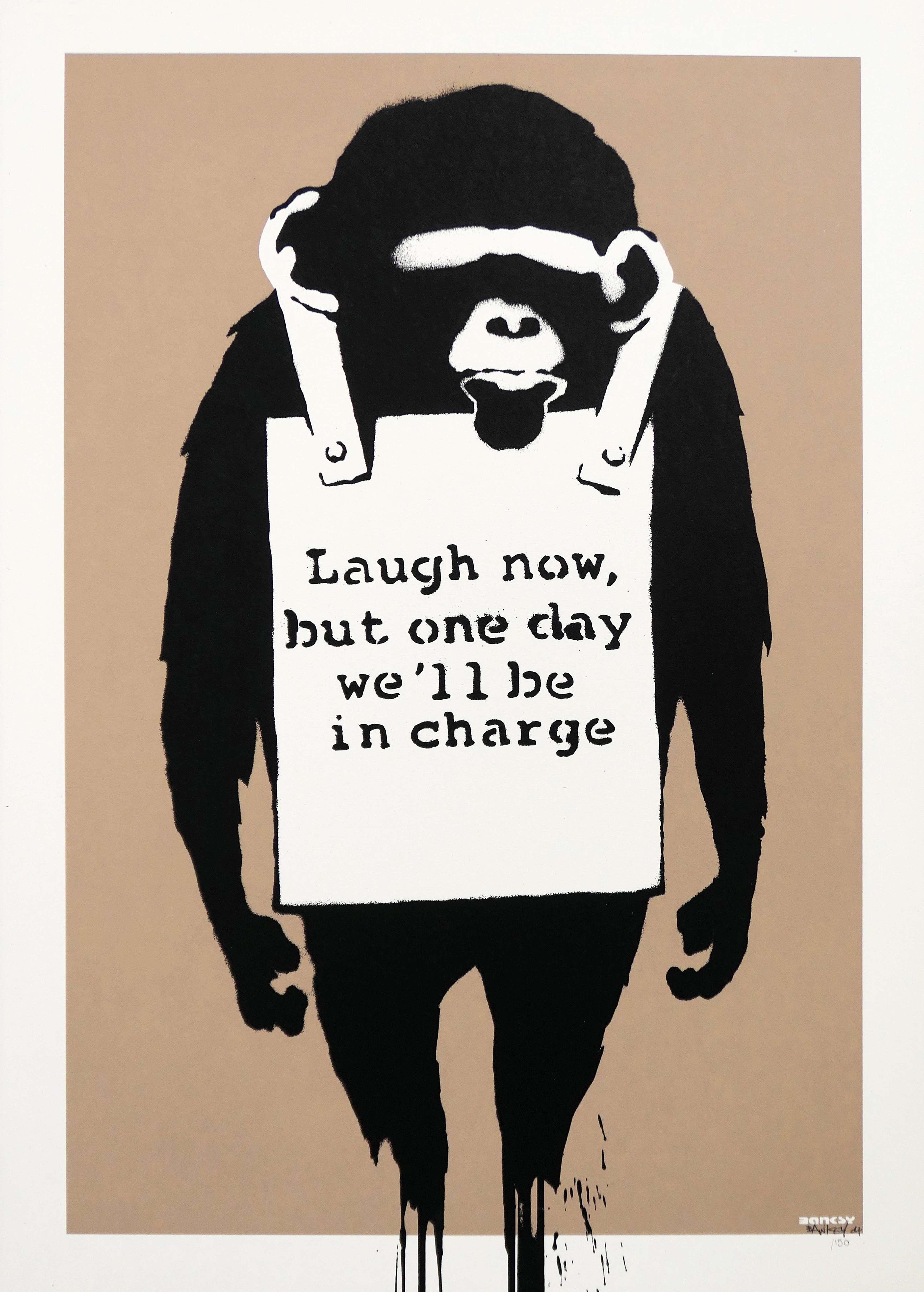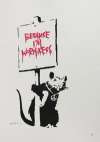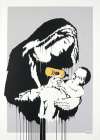Laugh
Now
Picturing a downcast chimpanzee wearing a sandwich board, these Banksy prints bear the anarchic title and slogan, "Laugh Now, but one day we'll be in charge." Despite his expression, Banksy's monkey is a defiant representative of society’s 'underdogs', who offers us the hopeful message that the oppressive reality of society will someday come to justice.
Banksy Laugh Now For sale
Laugh Now Value (5 Years)
The Laugh Now series by Banksy features both signed and unsigned editions, which diverge significantly in value. Signed examples consistently command premiums, with hammer prices reaching up to £783636. Across the series, 89 total auction sales have been recorded, with an average annual growth rate of -7.62%. For collectors, edition type plays a pivotal role in value potential within this series.
Laugh Now Market value
Auction Results
| Artwork | Auction Date | Auction House | Return to Seller | Hammer Price | Buyer Paid |
|---|---|---|---|---|---|
 Laugh Now Banksy Unsigned Print | 26 Nov 2025 | Deutscher & Hackett, Melbourne | £12,750 | £15,000 | £19,000 |
 Laugh Now Banksy Signed Print | 11 Dec 2024 | Tradart Deauville | £42,500 | £50,000 | £50,000 |
 Laugh Now (canvas) Banksy Signed Spray Paint | 13 Apr 2021 | Sotheby's Online | £586,500 | £690,000 | £860,000 |
Sell Your Art
with Us
with Us
Join Our Network of Collectors. Buy, Sell and Track Demand
Meaning & Analysis
A central motif in the artist's œuvre, the dejected, stencilled monkey of Laugh Now (2003) has become synonymous with Banksy. First commissioned by the now-defunct Ocean Rooms nightclub on Morley Street in Brighton, Laugh Now originally appeared as a six-metre-long, spray-painted mural behind the venue's bar. In this mural, the figure of the monkey was repeated 10 times in a row.
In 2003, Banksy issued 150 signed and 600 unsigned edition prints of Laugh Now, along with 69 artist's proofs. In 2008, Ocean Rooms sold the original Laugh Now at Bonhams auction house, where it realised a sale price of nearly half a million US dollars. Today, Laugh Now is internationally-recognised as an unmistakable Banksy work. It is also one of one of the artist's most popular prints.
Rendered in Banksy’s signature monochrome style, the forlorn monkey of Laugh Now wears only a sandwich board, bearing the words “Laugh now, but one day we’ll be in charge”. The heavy board, along with the monkey’s slumped shoulders and sunken eyes, suggest that he is oppressed or enslaved.
Along with the rat, the monkey is one of Banksy’s most frequently used animal characters. Banksy uses animals as didactic figures in his critical social commentary, which often satirises humankind. The catchphrase written on the sandwich board - 'Laugh now, but one day we'll be in charge' - is typical of the artist's use of text to convey powerful messages to his audiences. [To learn more, see our guides to Banksy's Monkeys and Rats.]
Laugh Now could be seen as a satire of contemporary politics, or as a criticism of humanity's treatment of animals - particularly our primate cousins. Suggesting that the monkey is preparing for an uprising, Banksy's cutting text is both mocking and threatening: it warns the artist's audience of iminent revolution.

